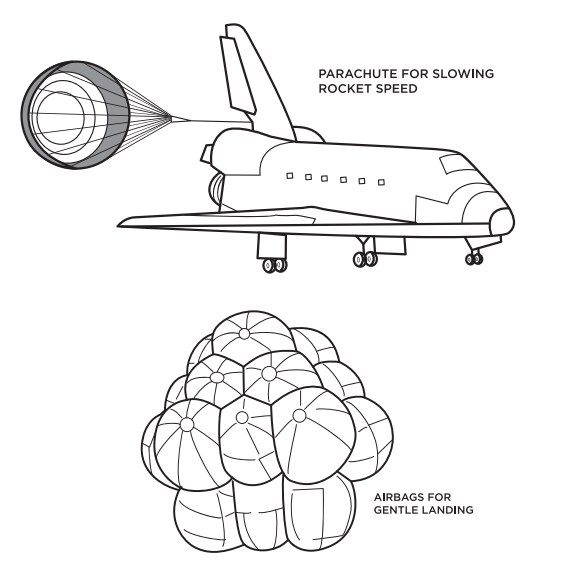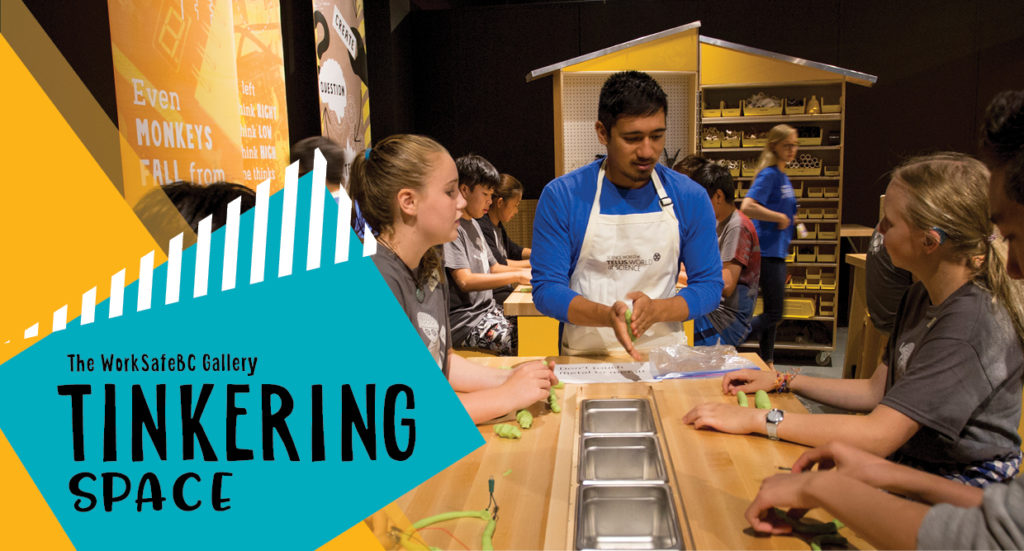Objectives
Materials
-
Per Class (an assortment of the following supplies):
elastic bands
masking tape
paper clips
string/yarn
aluminum foil
straws
cotton balls
paper plates, bowls, cups
toilet paper tubes
balloons
any other items you think might be relevant
-
Per Group:
1 price list
paper, pencil and erasers
1 raw egg
1 pair scissors
Key Questions
-
What are some features you think would help to land your spacecraft safely?
-
What are the advantages and disadvantages of these elements?
-
Why did you choose particular elements of your spacecraft design?
-
What are some of the disadvantages of the elements you chose? What were the advantages?
-
If you were to redesign your lander, what would you change and why?
What To Do
Preparation
- Prepare copies of the materials price list (students will be working within a budget to build their spacecraft) and arrange the materials at the front of the class.
- Choose a launch area (e.g. top of ladder or second storey window) and mark a target landing spot.
Activity
- In small groups, develop a diagram of a spacecraft that is able to land on a planet. The lander must:
- hit a target area on the planet (plan for accuracy),
- protect your astronaut (egg) during landing,
- allow the astronaut to exit the lander to conduct moon walks andbe within budget.
Get familiar with the launch area and target landing spot to create the best design for that terrain.
- Share your designs with other groups and discuss the advantages and disadvantages of each design.
- Based on the feedback of the other groups, make modifications to improve your design.
- “Buy” the materials, build your spacecraft and place your “astronaut” inside.
- Test the landers by dropping them from the designated height onto the target area. Check each to see if the astronaut arrived safely.
- Discuss why some designs worked and some did not, based on the results of the landings.
Extensions
-
Watch video footage of different planetary landing craft. Compare the aspects of the designs that played a role in their successful landings.
-
Discuss the use of “splashdown” as an alternative method for landing spacecraft safely. Splashdown is the method of landing a spacecraft by parachute in a body of water. The properties of water cushion the spacecraft enough that there is no need for a retrorocket to slow the final descent.
-
Research the similarities and differences between Earth, the Moon and Mars and discuss how spacecraft might change their designs for landing at each location. Consider the atmosphere, gravity and surface type at each location. For example, the Moon has no atmosphere and Mars has little atmosphere. (Parachutes are only effective where there is an atmosphere.) Mars has only a third of Earth’s gravity, so objects will fall slower on Mars than on Earth. On which planet is there the option for a water landing?
Other Resources
Canadian Space Agency | Junior Astronauts
These activities are designed for youth in grades 6 to 9. They focus on three streams—science and technology, fitness and nutrition, and communications and teamwork.
NASA | For educators | Train like an astronaut
NASA | Videos | Curiosity Landing in 2012
NASA Jet Propulsion Laboratory, California Institute of Technology | Mars Exploration Rovers | In-Situ Exploration and Sample Return: Entry, Descent, and Landing
NASA Jet Propulsion Laboratory, California Institute of Technology | Mars Science Laboratory: Curiosity Rover | Entry, Descent, and Landing
NASA Jet Propulsion Laboratory, California Institute of Technology | Videos | How Do You Land on Mars?


